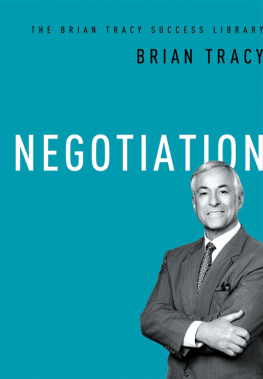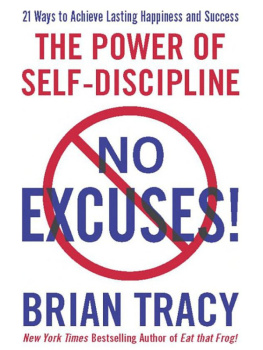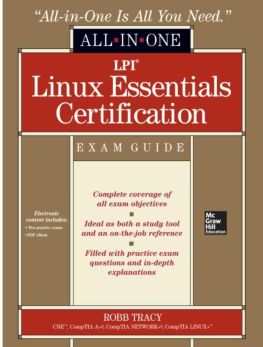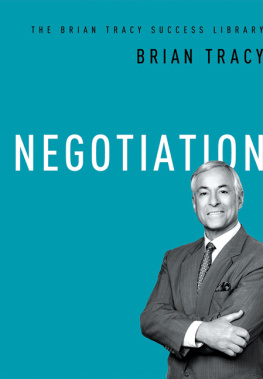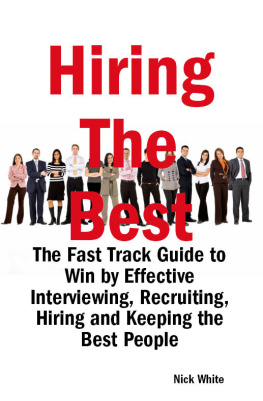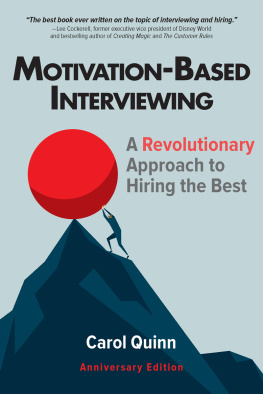Thank you for downloading this AMACOM eBook.
Sign up for our newsletter, AMACOM BookAlert, and receive special offers, access to free samples, and info on the latest new releases from AMACOM, the book publishing division of American Management Association.
To sign up, visit our website: www.amacombooks.org

HIRING AND FIRING
HIRING AND
FIRING
BRIAN TRACY

CONTENTS
by Brian Tracy and Ron Arden
Introduction
HIRING AND FIRING are two of the most important tasks of the manager, the person who is responsible for getting results through others. The first of these tasks is complex and uncertain, and the second is stressful and difficult. Both sets of skills must be learned through study and practice if the manager is to contribute his or her full potential to the organization.
The key executive talent is the ability to recruit, hire, and build a team of effective, competent people. In the modern world, all work is done by teamsby groups of people working together and interacting effectively toward predetermined goals. Therefore, the ability to select team members is critical to the success of the enterprise and to the success of the manager.
The information contained in this book is based on more than 30 years of recruiting, hiring, training, promoting, demoting, and firing men and women at all levels of business. It includes some of the best thinking on the subject by many of the top management experts and executives in the world today. In this book, you will learn methods you can use immediately to improve your hiring and firing abilities, to enhance productivity, to increase performance and profits, and to bring about higher levels of cooperation, teamwork, and harmony in your office or workplace.
Because individual human beings are so complex and unpredictable, even the best hiring skills will give you a success rate of only about 66 percent. One-third of the people you hire will probably not work out in the long run, according to the best statistics available on the subject. However, you can greatly increase the odds in your favor by following the recommendations in this book.
The Flipside of Hiring
I started my career in business at the age of twelve, mowing lawns. I bought a lawnmower and went from house to house soliciting work and cutting the grass. I hired my first employee when I was thirteen. He was my best friend. I also fired my first employee at the age of thirteenno longer my best friend.
Through the years I have hired hundreds of people. Ive also fired hundreds of people over the course of my career, not all of them people who I had hired personallyI inherited some of them when I stepped into management positions.
Over time, I read the very best material I could find on the subjects of hiring and firing, and I continue to keep up to date on these subjects. I have taken graduate courses on personnel selection, attended talks, listened to audio programs, read an enormous number of books and articles, and studied, analyzed, and given a great deal of thought to hiring and firing.
What I am going to teach you in the pages ahead are twenty-one key ideas you can use to hire the best people, to help ensure their success, and if necessary, to fire people who do not work out well within your organization.
What you will learn are simple, proven methods and techniques that you can use for the rest of your career. Lets get started.
ONE
The Selection Process
THE SELECTION process is the key to your success as an executive and to the success of your company. The first law of management is selection. Ninety-five percent of the success of any enterprise is determined by the people chosen to work in the enterprise.
If you select in haste, you will repent at leisure. Most hasty hiring decisions lead to sorrow later. A hiring decision involves not only your life and your activities, but also the life, complexities, attitudes, personality, skills, and involvement of another human being. It involves people in areas that affects their lives as much as anything else, other than their families. When you have to hire, therefore, the best rule is to hire slowly and to select carefully.
Take Your Time
Hiring is an art. It cannot be hurried. It is like painting a portrait or preparing a gourmet meal. Occasionally you can do it quickly, but in most cases you have to take your time to be sure to make the right decision.
When you are in the position of hiring someone, it is common to make the mistake of hiring as a solution to a problem. You are overloaded with work. You have a hole, a job that needs to be done because somebody has quit or the company is expanding.
You therefore look upon hiring a person as a solution to this problem. You then go into the marketplace, grab someone, and throw that person at the problem. You hope that the new hire will somehow plug up the hole.
This is the worst of all approaches. Many entrepreneurs or people starting and running small and medium-size businesses make this mistake of looking at people as solutions to problems. This is absolutely the wrong attitude and approach to the business of hiring.
Poor Selection Is Expensive
Poor selection is very expensive. Dont ever think that if it doesnt work out, you will just fire the person and get someone else. This is the attitude of a manager who is inexperienced or incompetent and who should not be in the position of hiring people in the first place.
Hiring is expensive for three reasons. Number one is that you lose your timethe time that it takes you to go through the selection process, prepare, interview, hire, and train the new individual.
Second, you lose the amount of money that you spent in salaries or wages, benefits, and training on your new hire, because everything learned is lost to the company when the person is fired and departs.
The third thing you lose is that individuals productivity, plus the productivity in between the firing and when the next person comes on board.
In addition, firing is expensive in terms of morale. In any company where a lot of firing goes on and there is high turnover of staff, you invariably have low morale, low performance, and low productivity because everybody is continually wondering if they are going to be next.
According to the personnel experts, it costs between three and six times the individuals annual salary to hire someone and then lose them when they dont work out. These are just the actual financial costs. This is why companies that have high rates of turnover are almost invariably low profit companies. The companies that are the most profitable have turnover rates that are as low as 1 percent or 2 percent per year.
Even if you are in a hurry to find the right person and get someone into that job, practice what Shakespeare said: Make haste slowly.
ACTION EXERCISES
Think of the best hire you ever made. Who was it and how did you go about making your decision?
Think about the worst hire you ever made. What mistakes did you make? What did you learn?
TWO
Think Through the Job
THOMAS J. WATSON , founder of IBM, had signs throughout the IBM offices, on every wall, with the single word THINK! Each person in the company was encouraged to look at those signs continually whenever making decisions or solving problems.
Next page

